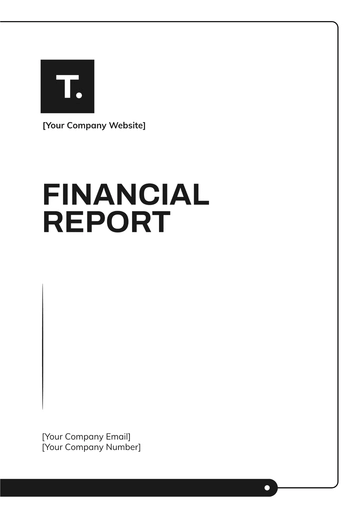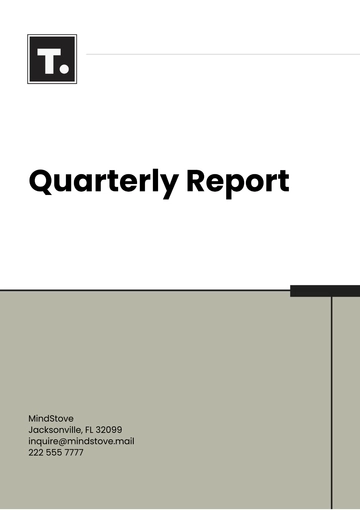Free Nursing Home Energy Management Strategy Report

I. Executive Summary
This report introduces a meticulously crafted Energy Management Strategy, designed by [YOUR COMPANY NAME] to transform the energy utilization framework within nursing homes. Our primary goals are threefold: elevate energy efficiency, achieve substantial cost reductions, and minimize the ecological footprint of our healthcare facilities. The strategy is comprehensive, detailing the planning, deployment, and expected outcomes, while clearly delineating the responsibilities of each stakeholder involved. It aims not only to promote sustainability but also to enhance operational efficiency through smarter energy use. By implementing this strategy, we are committed to setting a new standard in energy management within the healthcare sector, aligning operational excellence with environmental stewardship.
II. Current Energy Use
An in-depth analysis of last year's energy data has uncovered significant insights into our current energy consumption patterns. This data forms the cornerstone of our strategy, highlighting key areas where energy usage is most intensive and where there is the greatest potential for improvement. The following table presents a breakdown of the primary energy consumption areas and their associated financial impacts, establishing a clear baseline from which we can measure future enhancements.
Table 1: Detailed Current Energy Use and Cost Impact
Area of Energy Use | Energy Cost Impact |
|---|---|
Heating and Cooling | $120,000 |
Lighting | $75,000 |
Medical Equipment | $50,000 |
Water Heating | $30,000 |
This detailed breakdown not only identifies the highest costs but also pinpoints where interventions can yield the most significant economic and environmental benefits. This assessment is critical for prioritizing initiatives that promise the highest return on investment and the greatest impact on sustainability.
III. Proposed Strategic Plan
Based on the insights gained from our energy consumption analysis, [YOUR COMPANY NAME] has developed a robust Strategic Plan aimed at optimizing energy use across all our facilities. This plan is structured around three core components that together ensure a holistic approach to energy management.
Components of the Strategic Energy Management Plan:
Upgrade to Energy-Efficient Equipment: Recognizing the pivotal role of equipment in energy consumption, we plan to replace existing medical, HVAC, and lighting systems with the latest energy-efficient models. This upgrade is expected to significantly reduce energy usage and costs, while also lowering maintenance expenses due to the higher reliability and longer lifespans of modern equipment.
Staff Training and Awareness Programs: Human factors play a crucial role in energy management. As such, we are implementing comprehensive training programs for all staff members, focusing on energy conservation techniques and the importance of individual contributions to our energy goals. These programs will include interactive workshops, regular seminars, and ongoing educational campaigns to embed a strong culture of energy awareness and proactive behavior throughout our organization.
Enhanced Monitoring and Control Systems: To ensure continuous improvement and accountability, we will install state-of-the-art energy management systems across all nursing homes. These systems will provide real-time data on energy consumption, enabling precise monitoring and proactive management of energy use. Advanced analytics will help identify trends, predict future consumption, and facilitate swift corrective actions to avoid wastage.
Each of these strategic components is designed not only to reduce our energy consumption but also to instill a sustainable operational ethos within the organization. By integrating cutting-edge technology with human-centric approaches, our strategy addresses both the technical and cultural aspects of energy management, ensuring that [YOUR COMPANY NAME] leads by example in sustainability and efficiency within the healthcare industry. This holistic approach promises not just immediate benefits in terms of cost savings and environmental impact but also fosters long-term resilience and adaptability in our energy management practices.
IV. Expected Outcomes and Impact
The strategic implementation of our comprehensive energy management plan at [YOUR COMPANY NAME] is expected to profoundly transform our energy consumption patterns and significantly reduce our operational costs. This section outlines the specific results we anticipate following the rollout of our initiatives, paired with a set of meticulously crafted key performance indicators (KPIs) that will help monitor the efficacy and progress of the implemented strategies over time.
Anticipated Outcomes:
Substantial Cost Savings: We project a reduction in annual energy costs by up to 30% within the first two years following the implementation of the energy-efficient practices and equipment. This substantial decrease in energy expenditure will not only improve our financial bottom line but also free up resources that can be redirected towards enhancing patient care and facility services.
Decreased Energy Consumption: By integrating state-of-the-art energy-efficient technologies and fostering energy-conscious practices among staff, we aim to achieve a 25% reduction in overall energy consumption. This goal supports our broader commitment to environmental sustainability and positions us as a leader in responsible energy usage in the healthcare sector.
Improved Staff Engagement and Awareness: A key component of our strategy involves cultivating a culture of energy conservation across all levels of our organization. By educating and engaging our staff through targeted training and awareness programs, we expect to enhance their understanding and participation in our energy management goals, aiming to boost the staff participation rate in energy-saving initiatives from 50% to 90%.
To track these outcomes effectively and ensure the alignment of our strategic objectives with actual performance, we have developed the following Key Performance Indicators (KPIs):
Table 2: Detailed Key Performance Indicators (KPIs)
KPI | Baseline Value | 2050 Target | Measurement Frequency |
|---|---|---|---|
Energy Cost Savings | $0 | $75,000 | Annually |
Reduction in Energy Use | 0% | 25% | Annually |
Staff Participation Rate | 50% | 90% | Bi-annually |
Each KPI is designed to provide clear, measurable benchmarks for assessing the success of our energy management initiatives. These indicators will be evaluated regularly, allowing us to monitor progress and make data-driven adjustments to our strategies as necessary:
Energy Cost Savings: This KPI tracks the actual dollar savings achieved through our energy efficiency measures against the targeted $75,000 annual savings. Regular tracking helps identify the effectiveness of the implemented technologies and practices in real-time cost reduction.
Reduction in Energy Use: By measuring the percentage decrease in energy use annually, this KPI helps us quantify our progress towards the 25% reduction target. It reflects the impact of our energy-efficient installations and behavioral changes across the organization.
Staff Participation Rate: This indicator measures the percentage of staff actively participating in energy conservation efforts. Bi-annual measurements will help assess the effectiveness of our training and engagement programs, aiming to increase staff involvement from 50% to 90%.
These KPIs serve as critical tools for ongoing assessment and refinement of our energy management strategy. They provide a structured approach to evaluating the impacts of our actions and ensure continuous improvement. The data derived from these KPIs will inform necessary adjustments to maximize efficiency, enhance staff engagement, and achieve our cost-saving objectives.
By committing to these outcomes and rigorously monitoring our progress through these KPIs, [YOUR COMPANY NAME] is poised to not only meet but exceed our energy management goals. This proactive approach ensures that we not only contribute positively to the environment but also uphold our reputation as a leading healthcare provider committed to sustainability and operational excellence.
V. Conclusion
The increasing necessity for energy-efficient operations in healthcare facilities underscores the importance of adopting robust energy management strategies. This report demonstrates the significant potential for energy savings and environmental benefits through thoughtful planning and strategic execution. [YOUR COMPANY NAME]'s Energy Management Strategy offers a clear and actionable roadmap towards sustainable operations in nursing homes, promising considerable cost reductions and environmental advantages.
Prepared by: [YOUR NAME]
Company: [YOUR COMPANY NAME]
Through this comprehensive approach, [YOUR COMPANY NAME] commits to leading the way in sustainable practices within the healthcare industry, setting a benchmark for others to follow.
- 100% Customizable, free editor
- Access 1 Million+ Templates, photo’s & graphics
- Download or share as a template
- Click and replace photos, graphics, text, backgrounds
- Resize, crop, AI write & more
- Access advanced editor
Discover the Nursing Home Energy Management Strategy Report Template on Template.net! This comprehensive and customizable template empowers nursing homes to develop and implement effective energy management strategies. With our AI editor tool, effortlessly tailor the report to your facility's specific energy goals and requirements. Analyze consumption patterns, identify opportunities for efficiency improvements, and reduce operating costs. Simplify energy management with precision and ease.
You may also like
- Sales Report
- Daily Report
- Project Report
- Business Report
- Weekly Report
- Incident Report
- Annual Report
- Report Layout
- Report Design
- Progress Report
- Marketing Report
- Company Report
- Monthly Report
- Audit Report
- Status Report
- School Report
- Reports Hr
- Management Report
- Project Status Report
- Handover Report
- Health And Safety Report
- Restaurant Report
- Construction Report
- Research Report
- Evaluation Report
- Investigation Report
- Employee Report
- Advertising Report
- Weekly Status Report
- Project Management Report
- Finance Report
- Service Report
- Technical Report
- Meeting Report
- Quarterly Report
- Inspection Report
- Medical Report
- Test Report
- Summary Report
- Inventory Report
- Valuation Report
- Operations Report
- Payroll Report
- Training Report
- Job Report
- Case Report
- Performance Report
- Board Report
- Internal Audit Report
- Student Report
- Monthly Management Report
- Small Business Report
- Accident Report
- Call Center Report
- Activity Report
- IT and Software Report
- Internship Report
- Visit Report
- Product Report
- Book Report
- Property Report
- Recruitment Report
- University Report
- Event Report
- SEO Report
- Conference Report
- Narrative Report
- Nursing Home Report
- Preschool Report
- Call Report
- Customer Report
- Employee Incident Report
- Accomplishment Report
- Social Media Report
- Work From Home Report
- Security Report
- Damage Report
- Quality Report
- Internal Report
- Nurse Report
- Real Estate Report
- Hotel Report
- Equipment Report
- Credit Report
- Field Report
- Non Profit Report
- Maintenance Report
- News Report
- Survey Report
- Executive Report
- Law Firm Report
- Advertising Agency Report
- Interior Design Report
- Travel Agency Report
- Stock Report
- Salon Report
- Bug Report
- Workplace Report
- Action Report
- Investor Report
- Cleaning Services Report
- Consulting Report
- Freelancer Report
- Site Visit Report
- Trip Report
- Classroom Observation Report
- Vehicle Report
- Final Report
- Software Report





























